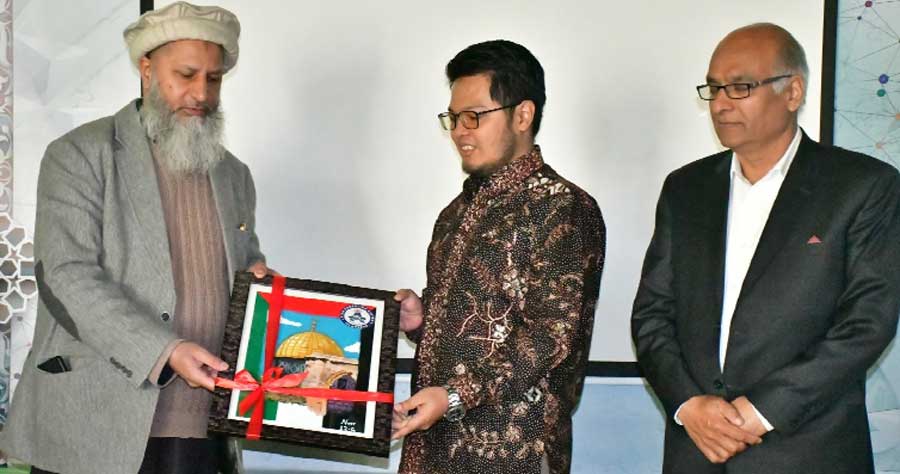The Election Rules, 2017 place two forms at the center of the intense debate surrounding the results of the election on February 8: Form-45 is the results of the [vote] count, which is prepared by the polling place presiding officer, and Form-47 is the provisional consolidated statement of results of the vote count of all polling places in a constituency, which is prepared by the Returning Officer (RO) in question before the inclusion of the postal ballots that were received in the count.
The integrity of Pakistan’s electoral process, particularly on polling day, is primarily maintained by three pillars. The accuracy of the data entered on Forms 45 through 49 is the first pillar. In all likelihood, the inaccuracies will be carried through and result in inaccurate results for the constituency if there are faults in the fundamental data on Form-45 and the obvious errors and omissions, like an incorrect total, are not verified by the RO at the time of receiving Form-45.
Every polling station’s senior-most assistant presiding officer and presiding officer are required to sign, affix their thumb impressions, and record their CNIC numbers, attesting to their having reviewed and verified the completed form. However, a large number of Form-45s are generally filled with errors, and occasionally, the officers’ signatures are absent. By the legislation, the candidates’ polling agents must sign the completed Form-45. However, during the 2018 election, 90% of the forms published on the ECP website were devoid of polling agent signatures, casting doubt on the forms’ veracity. Form-45s for the 2024 election have not yet been posted to the website, hence this examination has not yet been done.
The integrity of voting day procedures is maintained by three pillars: Sharing information with all candidates and political parties via their polling and election agents, as well as the media and general public shortly after, constitutes the second pillar of poll integrity. The Elections Act of 2017 mandates that each candidate present a verified copy of Form-45 to their polling agent to guarantee total transparency. The law mandates that a copy of Form-45 be posted for public viewing outside of every polling booth.
In contrast to the 2018 election, where the most frequent grievances received on the election day were that polling agents were not allowed to participate in the vote counting process at the polling places and that many of them had not received signed copies of Form-45, these complaints were relatively rare in the 2024 election. The majority of concerns about polling day this time seem unrelated to polling sites, where the majority of polling agents appear to have received the Form-45 completed.
This time, the majority of complaints were about the procedures followed in the ROs’ office, where it was purported that numerous candidates and their representatives were denied access to the area while Form-47 was being prepared. As a result, numerous candidates complained about significant discrepancies in the total number of votes reported in Form-45and the ones subsequently entered in Form-47.
There is a significant dispute regarding the purported difference between these two formats. Numerous candidates who have proclaimed the losers in the election have expressed dissatisfaction over the discrepancy between the total votes indicated in Form-47 and the total votes they received and reported on Form-45. These criticisms cast doubt on the veracity of the data in Form-47 as well as the transparency of the consolidation process, endangering the polls’ credibility.
The prompt dissemination of the data on these forms and the announcement of the results constitute the third essential pillar upholding the integrity of election day. Being timely doesn’t always mean announcing results quickly; it just means adhering to the legally mandated timeline. Certain nations, such as India, have election commissions that adhere to legal deadlines tally votes, and announce results weeks or even days after polling day. This system works well for them and does not jeopardize the integrity of the polls. Election laws and regulations in Pakistan have precise poll timelines, and breaking these provisions could have detrimental effects on the legitimacy of the results.
The Elections Act’s proviso in Section 13(3) lays out the schedule for declaring provisional election results. It states that each RO must assemble the whole set of results by 2 a.m. on the day that follows polling day. Should this prove unfeasible, the RO will promptly “send the complete provisional results as soon as compiled but not later than 10 a.m.” There are now significant doubts regarding the election’s integrity because nearly all of the 859 returning officers broke the rules and the full provisional results were not released until 48 hours after the final deadline.
Sections 95(8) and (10) of the Elections Act delineate a crucial facet of the system about openness and prompt results declaration. According to these regulatory requirements, “the Commission shall publish the documents on its website within 14 days of the poll date.” The forms 45, 46, 48, and 49 are the ones mentioned in the legislation. Another major legal error has happened, which seems to have further damaged the election’s legitimacy and integrity, as the deadline of 14 days passed on February 22 without the ECP publishing the documents on its website. It looks like a lot of explaining will be required on the part of the ECP to dispel such unfavorable impressions.
A formality method




